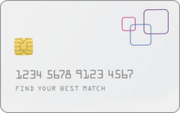The content on this page is accurate as of the posting date; however, some of the offers mentioned may have expired.

When it comes to payments flexibility can be key, and for those with a U.S. Bank MasterCard they now have more ways to pay – namely with Android Pay and Samsung Pay.
This upgrade came on the heels of the announcement that U.S. Bank has partnered with MasterCard so that their customers can now use these two mobile payment methods to buy everything from dinner out and new sneakers to airline tickets and hotel rooms for their summer getaway.
"Partnering with MasterCard to bring more mobile payment options to our cardmembers helps make it easier for them to try new ways to pay," said Clifford Cook, senior vice president for U.S. Bank Retail Payment Solutions. "This is an important step in the continuing evolution of payments and consistent with providing our cardmembers the convenience of making mobile payments with whatever mobile device they choose."
Load your MasterCard
To get started people with U.S. Bank consumer and small business MasterCard can how start entering their MasterCards into their Android or Samsung Pay apps. And once they do, they can start making payments with their mobile phones.
When using Android Pay, people can use their phone to make payments at more than one million locations, as well as via various Android apps. The mobile wallet is pre-loaded in most of the new Android phones.
With Samsung Pay people can pay for merchandise at most payment terminals whether they use Near Field Communication (NFC) or Magnetic Secure Transmission (MST). This means they can pay at almost all payment terminals.
It is important to note that these systems will also work with MasterCard credit cards that are issued by U.S. Bank on behalf of co-brand and affinity partners, which includes Edward Jones and REI.
Tokens, Tokens, Tokens
If mobile device security is an issue for Americans, with both Android Pay and Samsung Pay the system creates a token that is sent to the payment terminal rather than the user's actually payment information. This aspect of the design makes it harder for criminals to steal peoples' financial and credit card information.






